15 ways to spruce up your garden for spring

A thorough home clearout is often a top priority in spring, however, turning your attention to your outside spaces could also pay dividends come summer.
Having been cooped up all winter, heading out into the fresh air and sunshine to give your garden a spruce up is the perfect excuse to soak up some vitamin D. What’s more, you’ll be thankful when the warmer weather comes around.
READ MORE: Easy gardening hacks to take the graft out of growing
From a small garden to an enormous backyard, we have plenty of tips and ideas to get your teeth into in order to prepare for the summer months.
1. Start with a spring clean
Just like cleaning your house or having a major declutter, making over your garden is a big job best broken down into smaller tasks. Begin by making a plan as to how you’re going to tackle it, with notes on what supplies to buy or who to call on to help if you need it.
A good place to start is removing any fallen leaves and clearing borders and beds back to bare soil. You can use the dead organic matter you collected in your compost pile later as a natural fertiliser, but don't put weeds in the compost as the seeds can germinate and cause problems later down the line.
2. Fix broken fences
Spring is the time to fix any issues in the garden such as broken or rotten fences, tired-looking garden furniture or old garden sheds.
You can start prepping the garden structures before the weather turns to get a head start. Check fences have survived the winter and remove or fix any broken posts, or even garden supports and pergolas. Secure shed roofs before April showers begin and repair any decking so you can sit back and enjoy the sun when temperatures start to really rise.
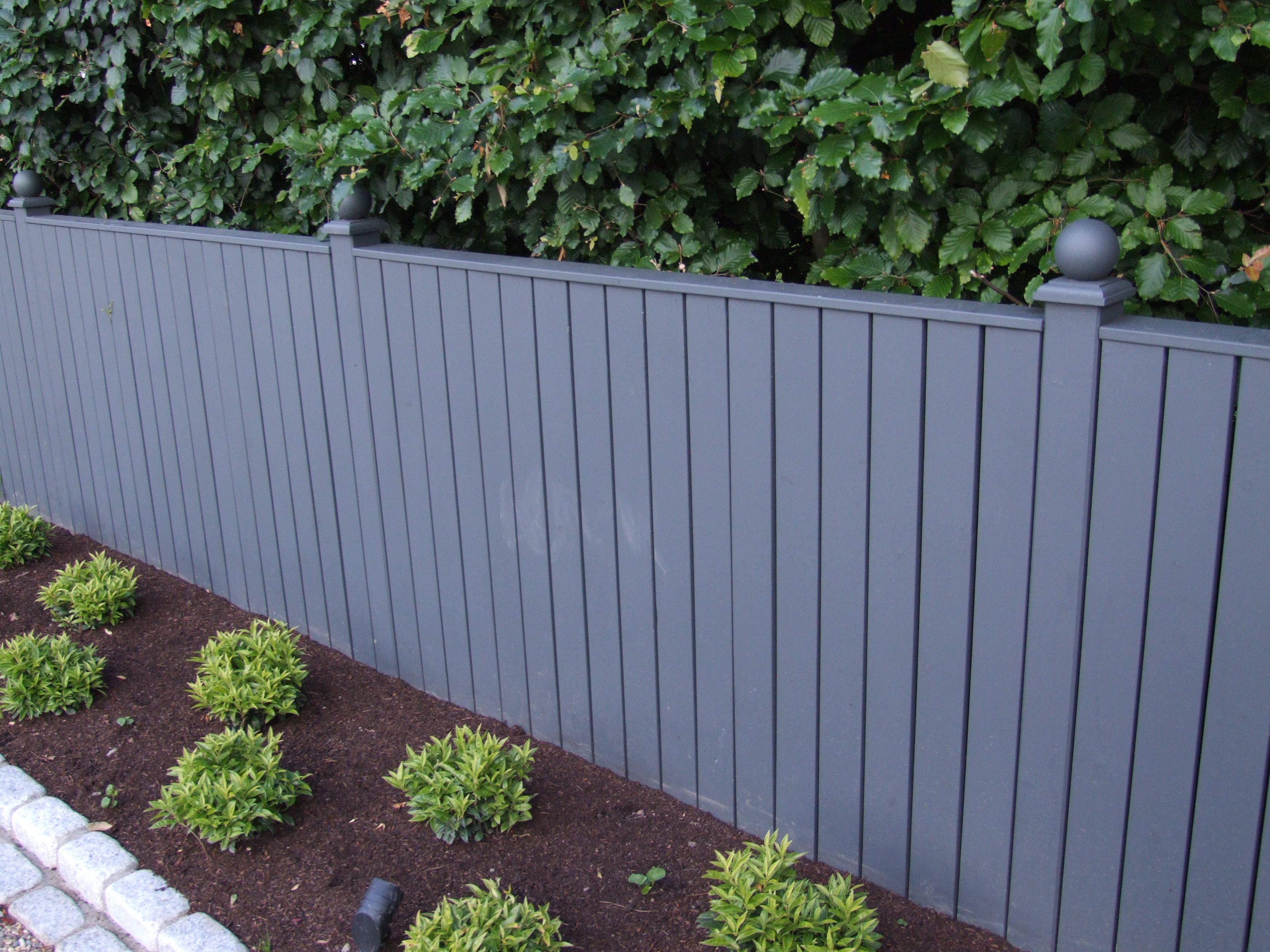
Image credit: Serenitylandscapes.com
3. Refresh surfaces with paint
Once all surfaces are fixed and cleaned up, it’s time to stain or paint them to protect them over the coming months.
Thankfully, gone are the days of creosote brown being your only option—now exterior stains and garden paints are available in a whole array of beautiful shades. Why not experiment with adding pops of colour throughout your garden on furniture, fences or shed? You could even get creative decorating plant pots or painting a custom mural on the wall.
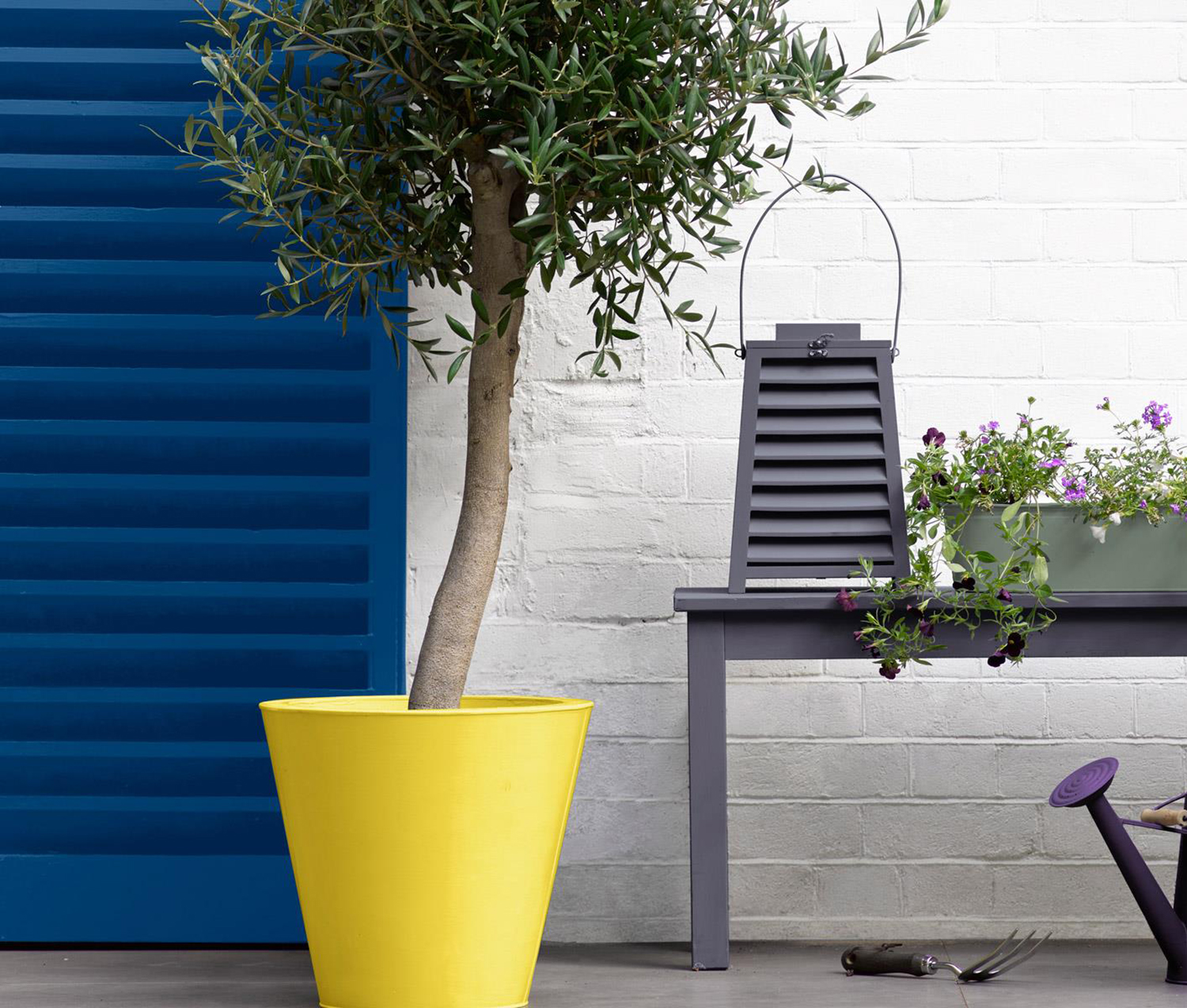
Image credit: Sadolin
Just remember to prepare surfaces appropriately before painting by removing any dirt, rust or flaking paint. Be sure to use a formula specifically designed for exterior use to match the material you’re painting i.e. metal, wood or brick.
4. Blitz the borders
Start by hoeing borders to remove weeds and dead annuals like geraniums and begonias, feeding borders and hedges with fertiliser and applying a thick layer of mulch to retain moisture and help keep future weeds at bay.
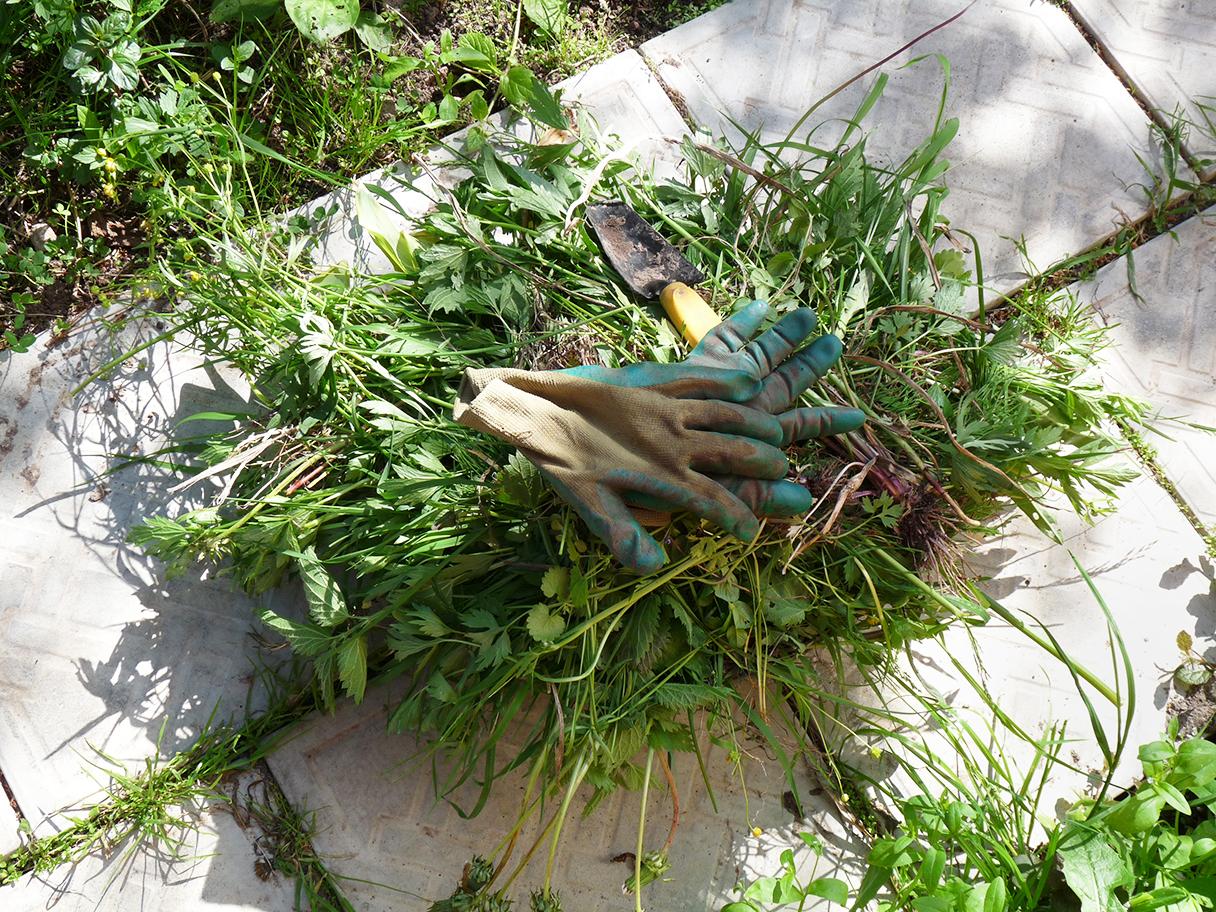
Image credit: Pixbull / Shutterstock
Now is the ideal time for planting new additions to your garden, with roots establishing quickly as soils warm during the early spring.
5. Prune existing plants
Prune your roses now to make them flower through the summer. Different varieties need different treatments, so do your homework if you're not sure where to start.
Generally, you want to remove any dead or diseased branches by cutting to the base. Use sharp secateurs to make a clean, slanted cut just above an outward-facing branch.
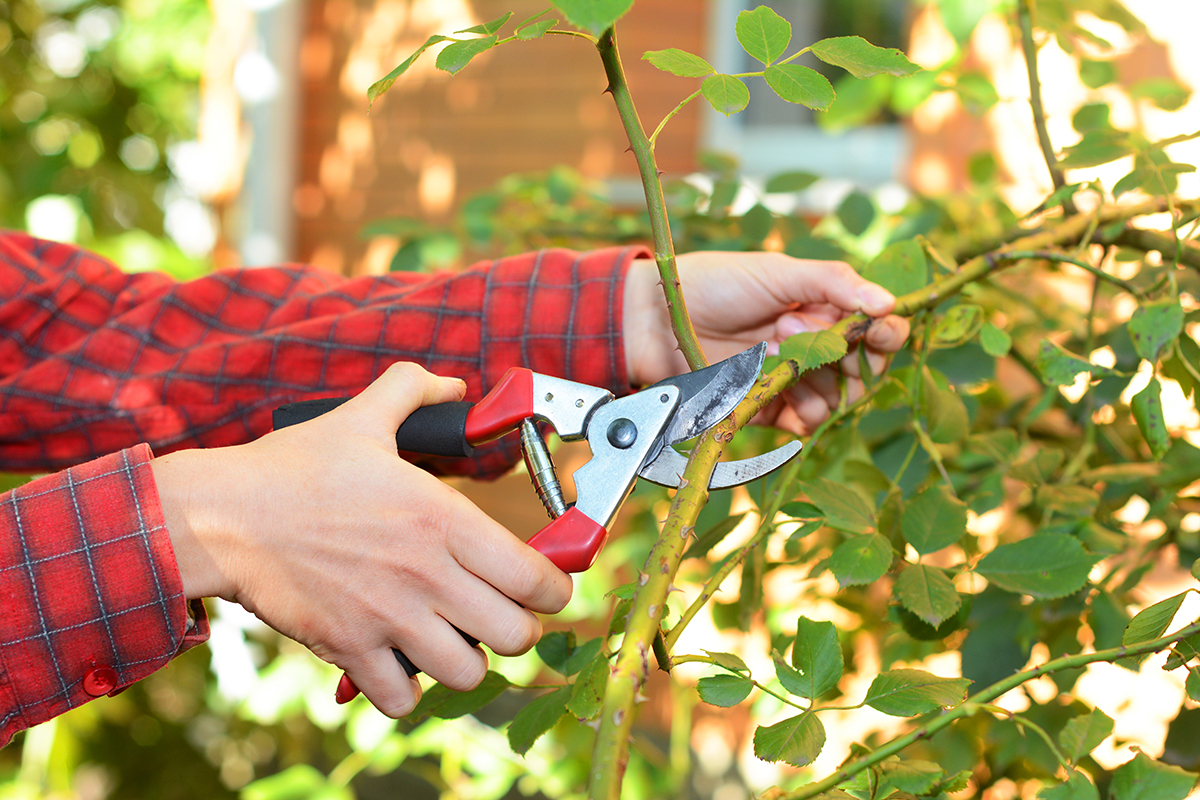
Image credit: Radovan1 / Shutterstock
Now's the time to also lift and divide congested clumps of snowdrops while still in ‘the green’ and prune back late summer/autumn flowering clematis.
After a wet and windy winter season, some plants will require trimming into shape; pruning summer flowering shrubs such as buddleia and lavatera will encourage new growth. Do the same by cutting back colourful stems of cornus and salix.
6. Smarten up borders
Now that you've spruced up your plants and got rid of the weeds, it's time to give the flowerbeds a facelift. Freshen up the soil in your garden by applying mulch and compost to feed the soil and the plants.
Take all the effort out of maintaining them by adding a layer of gravel over the soil. As well as suppressing weeds and looking super-smart, the solution is very low maintenance.

Image credit: Primrose.co.uk
Trim any overgrown grass around the edges with shears and get a sharp clean look with some new border edging; you could add a traditional stone border, go for a pretty woven willow design or choose a modern flexible material for curved edges.
7. Weed paths and clean patios
Choose a dry spring day to tackle weeds in paths and patios. Specific weedkiller for paths is the simplest way to get rid of perennial weeds and it works on gravel and paving equally well.
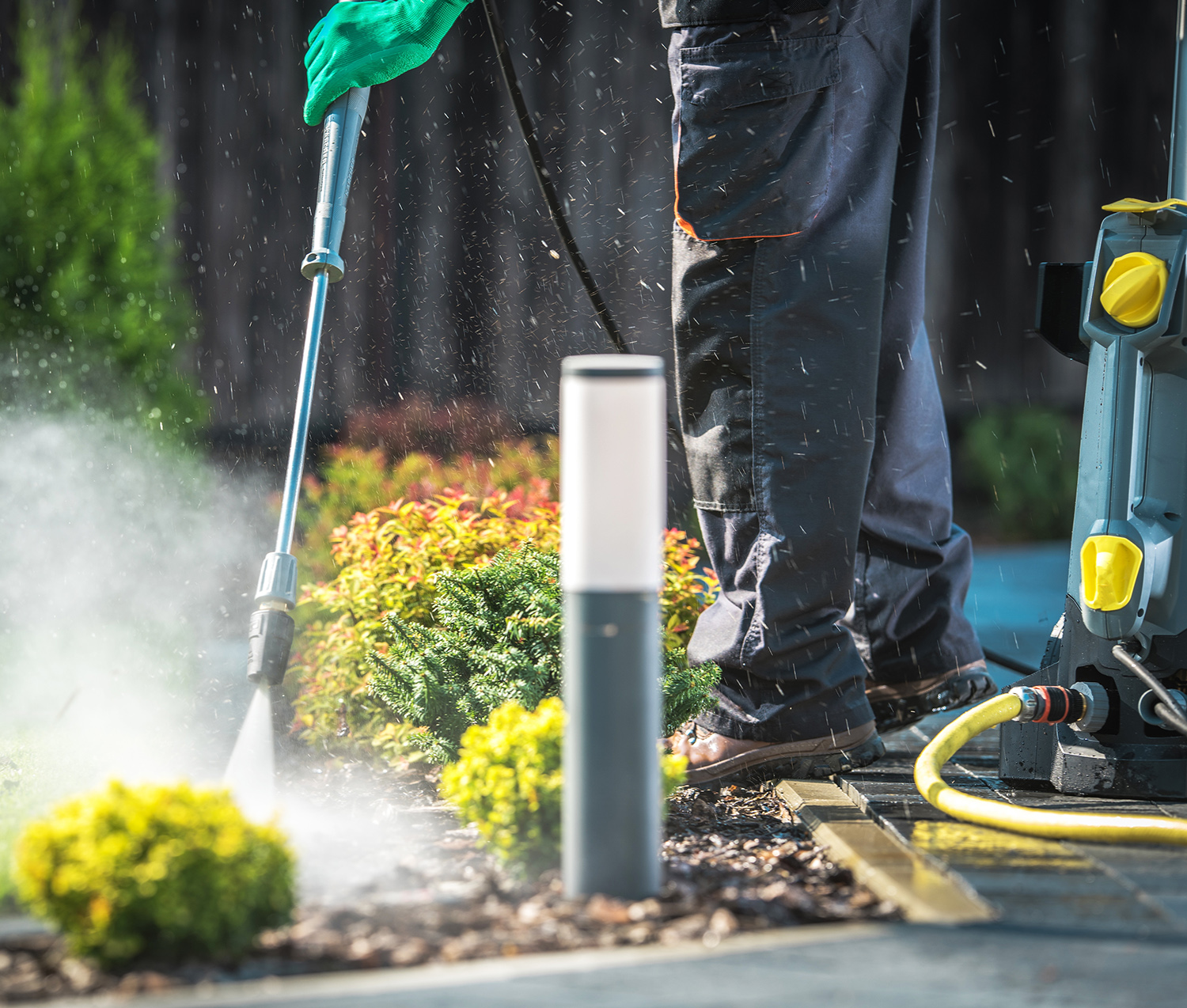
Image credit: Welcomia / Shutterstock
Apply an even blanket and leave to work for a few weeks until the plants are completely dead, without agitating the ground, cutting off the tops or raking. If you’d rather not use pesticides, white vinegar can work, and so too can laying down thick black polyethene plastic sheeting, but this can take up to 10 weeks to be effective.
After weeding, get a strong bristle sweeping brush and get scrubbing with washing-up liquid and warm water. You can, of course, always use a jet washer for this part but the brute force can damage the cement pointing between slabs so go carefully. If the paving stones are green, apply a mould, moss and algae remover to brighten them back to their original colour.
8. Install a water butt
If you want to make the most of the seasonal rainfall over winter and early spring, now's the perfect time to install a water butt in your outside space.
An environmentally-friendly way to maintain your garden, getting your setup in place now means you'll have plenty of rainwater stocked up when the mercury rises later in the year. What’s more, you’ll be saving on rising water bills by not using a household tap.
When you install your water butt, place it beneath a downpipe for easy collection—if you have a closed drainpipe, you'll need to purchase a diverter.
9. Start potting up plants
To quickly transform the area outside your back door, simply plant up a few pots and hanging baskets for instant colour and spring cheer.

Image credit: Valda / Shutterstock
Choose a colour theme for your plants to create a display with impact in bright pinks and sunny yellows, and include a mix of lush foliage, big blooms and delicate flowers.
You don’t just have to use flowers; why not plant a basket of your favourite herbs or use it to grow tomatoes from seed? You'll have to water it every day in the summer months but you can grow a generous crop of delicious toms with very little outdoor space.
10. Set up your lawn for spring
Spring is a crucial time for lawn care; the work you do now will determine whether you have lush green grass in the summer or not. Prepare the ground this month ready for sowing grass seed in April to give your new lawn time to establish before summer arrives. Wait till the ground is thawed and dried out before you begin to avoid compacting the soil.
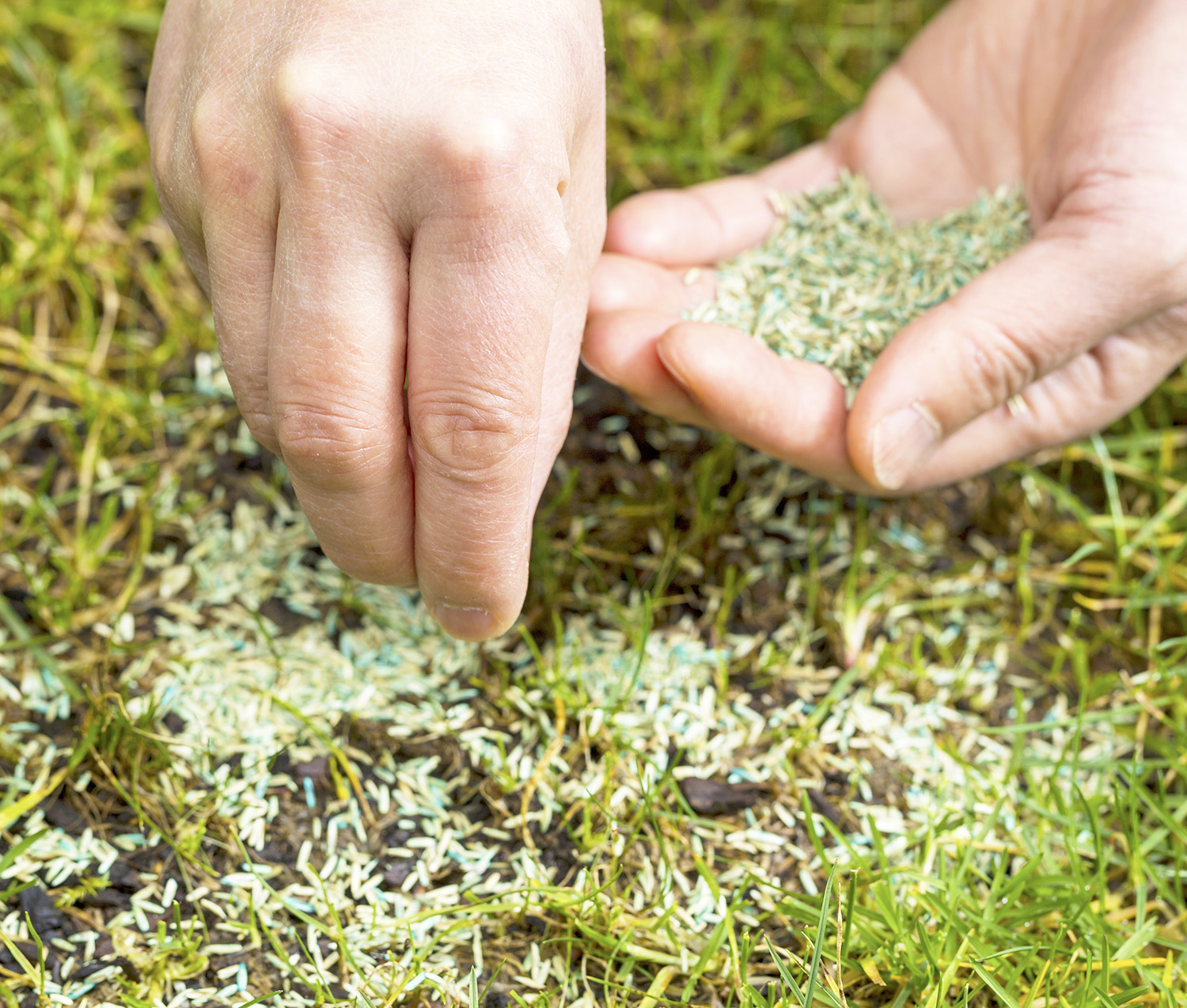
Image credit: Shutterstock
Rake the grass deeply to remove dead blades and thatch, so that any new seed or fertiliser can penetrate properly. Once cultivated, make sure the area is firmed and level, ready for sowing. The type of lawn seed will depend on how you plan to use your lawn. Consider the aspect and what the lawn will be used for.
If the site is shady, choose a shade-tolerant mix. If the lawn is going to get a lot of foot traffic or be used for playing, pick a hard-wearing mix. If you just need to repair a bare or damaged patch of grass, opt for a seed that matches the surrounding turf. Overseed bald patches and apply slow-release nitrogen fertiliser to give the grass a boost.
11. Lay new turf
For quicker results, you can also lay new turf, leaving it undisturbed for a few weeks to allow the new roots to take, but whichever method you choose, be sure to keep your lawn watered until it is well established, particularly as the weather warms.
If it’s mild enough and the lawn is showing signs of growth, give it the first light cut of the season, keeping blades on their highest setting. Later in the month, apply a spring/summer lawn feed high in nitrogen.
12. Get in shape to grow your own
If you’re looking to grow vegetables, prepare the beds by removing weeds and forking in plenty of garden compost or well-rotted manure.
To help keep the soil warm and dry, you can cover prepared beds with sheets of black plastic until you are ready to plant.
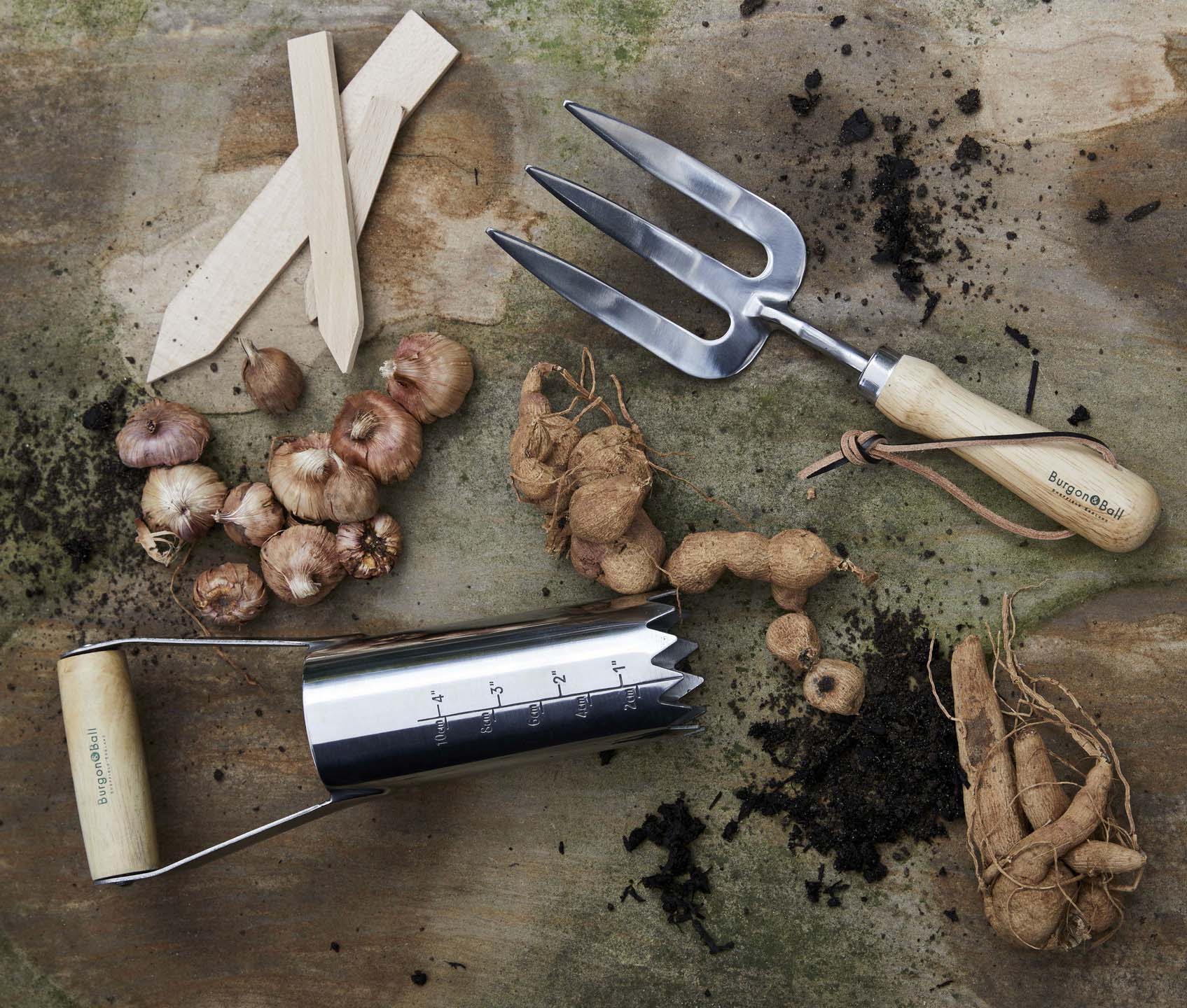
Image credit: Dobbies
As weather and soil conditions allow, plant shallots, onions and early potatoes. If space allows, consider planting an asparagus bed; one of the most prized of all vegetables, once established they reward you with a spring bounty of delicious spears for many years to come.
In the fruit garden, mulch existing rows of raspberry canes and fruit bushes, and plant rhubarb, remembering to allow room for them to grow to their full size. With all new plants, add a thick layer of mulch to help retain moisture and keep weeds at bay. Check out our guide to growing vegetables in small spaces for more tips.
13. Check for pests
Warmer weather brings common garden pests like slugs, snails and aphids out to play and they love nothing more than munching on your young and tender shoots and leaves. Spreading grit or gravel around your plants is a good deterrent for slimy critters. They are also thought to hate coffee grounds and copper tape will give them a tiny electric shock. Get rid of aphids by simply squishing them in a gloved hand to stop them from spreading.
14. Sow your first seedlings
One of the most economical ways to add colour to your garden is to grow your own bedding plants. These should be planted immediately into small pots to grow in a warm, frost-free greenhouse or conservatory ready to transplant into the garden when all risk of frost has passed.
Many gardeners are now using native plants and flowers as they look to be more conscious of the nature around them and help local wildlife to survive and thrive.
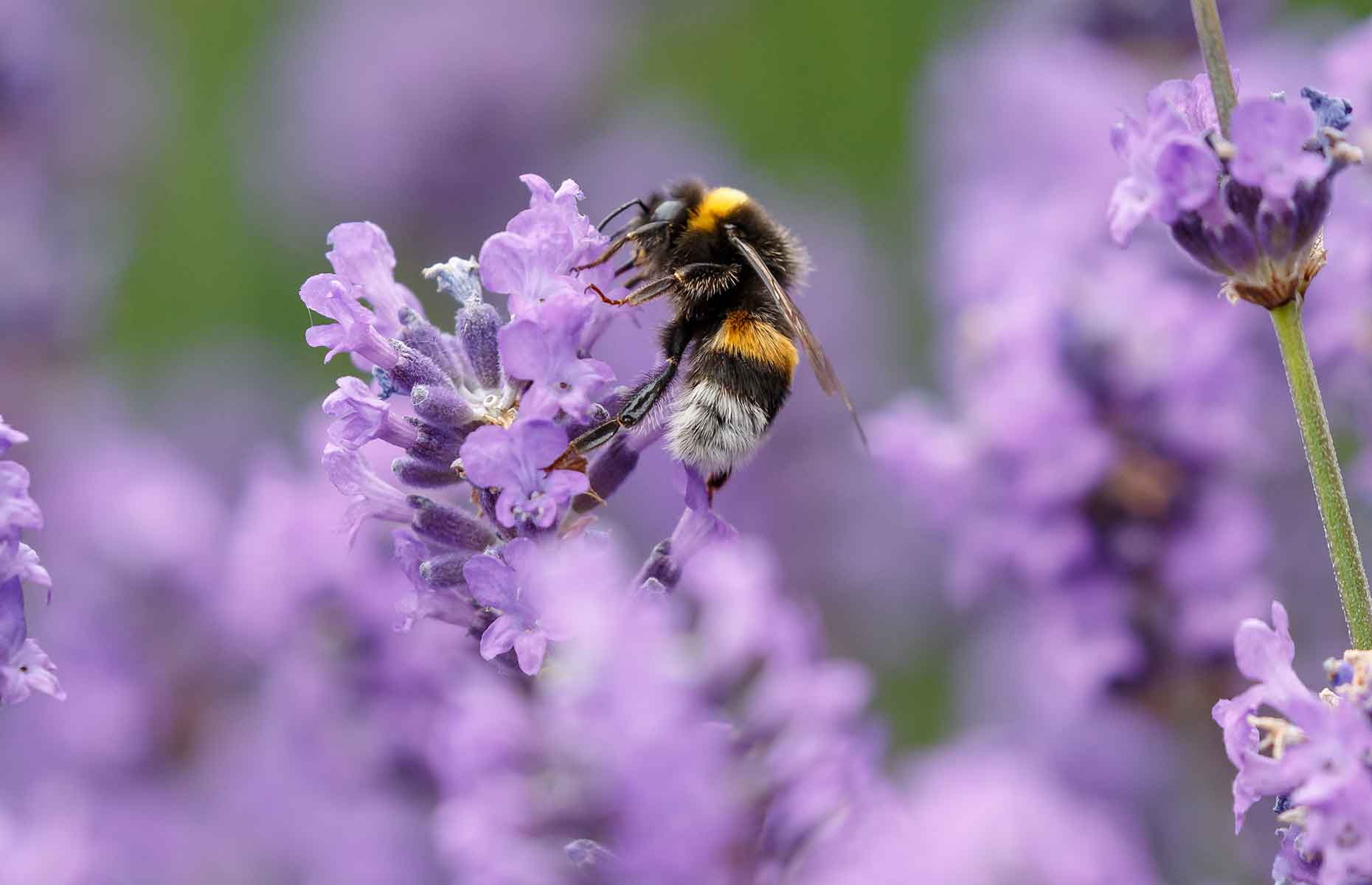
Image credit: Menno Schaefer / Shutterstock
Planting nectar-rich flowers is an excellent way of attracting butterflies and bees into the garden. Species such as hebe and lavender are particularly popular and produce an array of purple flowers that attract a wide range of insects. Daffodils are the quintessential symbol of spring, while pansies are ideal for smaller borders and hanging baskets.
15. Look after wildlife
Encourage nesting birds into the garden by providing them with energy-packed foods and clean water to drink and bathe in. Fatballs, seeds and nuts are all good sources of nutrients but clean up any dropped food to prevent it from going mouldy or attracting rodents.
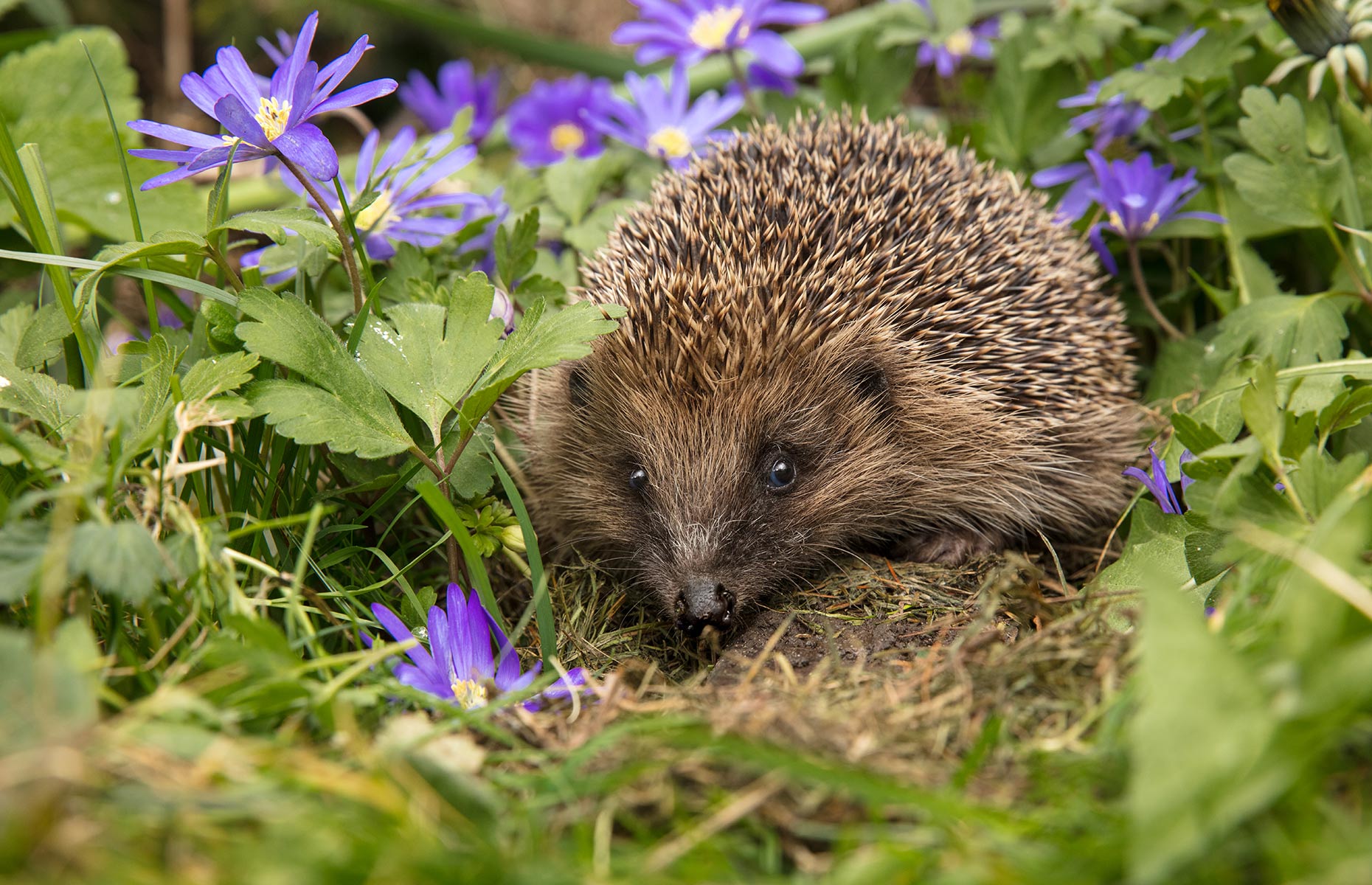
Image credit: Anne Coatesy / Shutterstock
In addition to our airborne friends, hedgehogs are now on the Red List of endangered species and need our help. Hedgehog Street recommends leaving a patch of your garden to grow wild, leaving out fresh water and specialist hedgehog food—available from most pet stores—and cutting CD-sized holes in your fence so they can travel without crossing busy roads. Just be sure to ask your neighbours first.
READ MORE: How to start a garden
Cover image: Nataliia Melnychuk / Shutterstock
Comments
Be the first to comment
Do you want to comment on this article? You need to be signed in for this feature